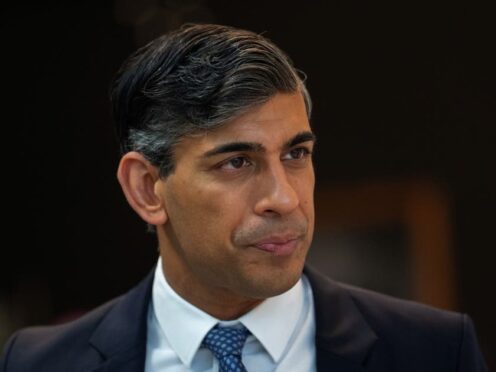
Many of the nation’s papers have described Rishi Sunak’s July 4 election announcement as a “gamble,” as Britons finally have a date to head to the polls.
Several publications point to the Tories trailing Labour by 20 percentage points as a sign a change of government is all but certain, however others stress the pressure is now on Sir Keir Starmer’s party.
“Sunak bets the house” is the headline on the front of The Times, with the paper taking the view that Wednesday was “perhaps the last possible moment for this government to head to the country on something like the front foot”.
“Beyond July lies an uncertain political landscape dotted with dangers as well as opportunities”, a leading article states.
“There was logic, therefore, in ending speculation that, over time, would have become only more of a distraction to governing.”
The Telegraph takes a similar line, declaring Mr Sunak saw “a window of opportunity” while stating in an editorial that “a Labour government might well bring change, but it will not be of the good kind”.
It continues: “Labour would tax more, regulate more, be weaker in defence of the national interest and be far more relaxed about mass
migration and the excesses of green ideologues.
“The Tories can hardly claim that their own record is unblemished in any of these areas. But the party must now pull together behind the Prime Minister and hammer home the message that the situation will be much worse if Sir Keir enters No 10.”
The Daily Express is also behind the Prime Minister, claiming in a leading article Britain has “bounced back” under his leadership, while Sir Keir “desires power for its own sake”.
“Just as he made the right decisions as Chancellor during the pandemic, Mr Sunak has held his nerve as Prime Minister, ended disarray at Westminster and led us out of an economic crisis,” the paper says.

“Today, he is still the right person to safeguard Britain’s recovery and ensure we grasp the enormous opportunities available to us.”
The Daily Mail calls Mr Sunak’s decision “nothing if not bold,” adding that it is now up to Labour “to convince the electorate it is fit to govern.”
An editorial states: “To Starmer’s credit, he has undeniably changed the Labour Party from the unelectable rabble they were under Jeremy Corbyn.
“And his shadow chancellor Rachel Reeves seems to truly understand the importance of making Britain somewhere businesses want to invest in.
“But so far the party has largely achieved its sustained poll lead because of Tory failings (of which there have been far too many).”
The Daily Mirror, meanwhile, is of the belief that the “end of 14 years of incompetent and damaging Tory rule is now in sight”.
The paper says that “by almost every measure the Conservatives have failed Britain”, adding: “This election will be a choice between a dismal past or a more hopeful future.
“This is Labour’s moment. This is the moment for the change we need.”
The Guardian says Mr Sunak had little choice but to announce a date, writing in a leader article that “fear of taking punishment for years of accumulated disappointment is the reason why Rishi Sunak has postponed the dissolution of parliament until now”.
It continues: “The prime minister’s decision to set a date – the election will be on 4 July – is driven not by confidence in a record to celebrate, but by a recognition that procrastination had become untenable.
“The Conservative party, exhausted and riven by factional feuding, has become ungovernable, leaving the country feeling ungoverned.”

Enjoy the convenience of having The Sunday Post delivered as a digital ePaper straight to your smartphone, tablet or computer.
Subscribe for only £5.49 a month and enjoy all the benefits of the printed paper as a digital replica.
Subscribe